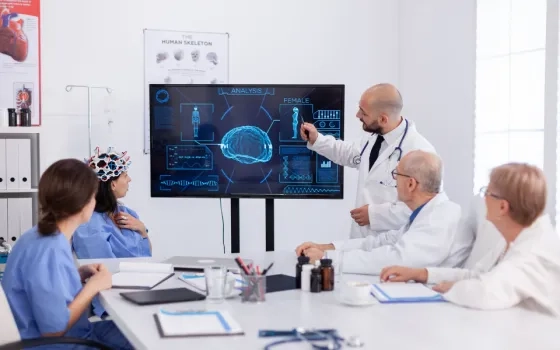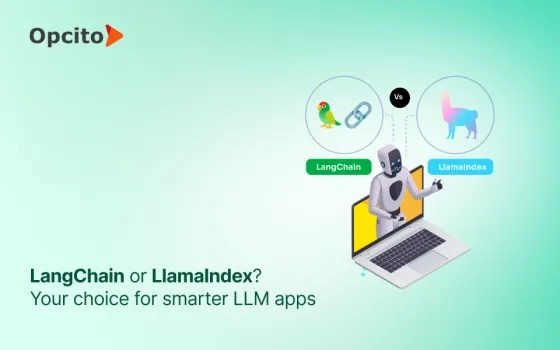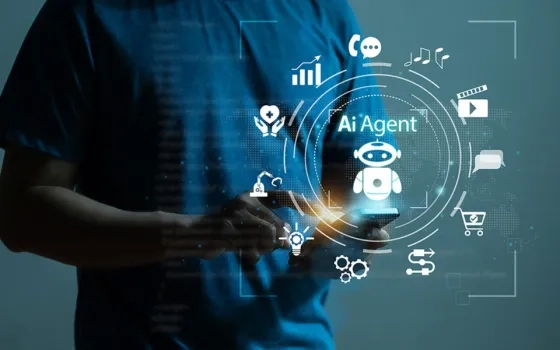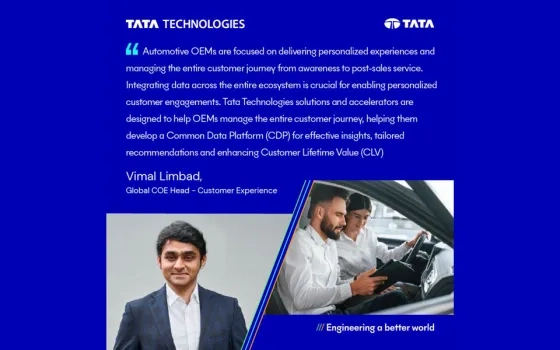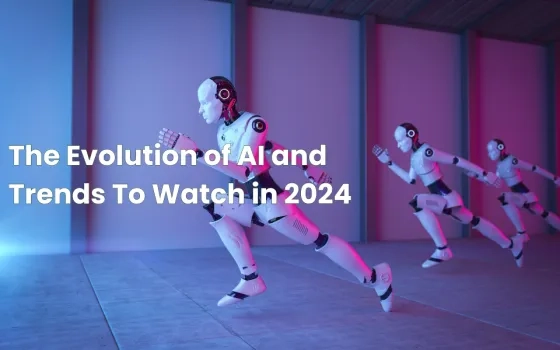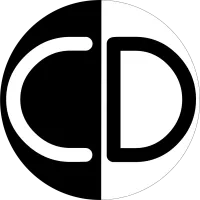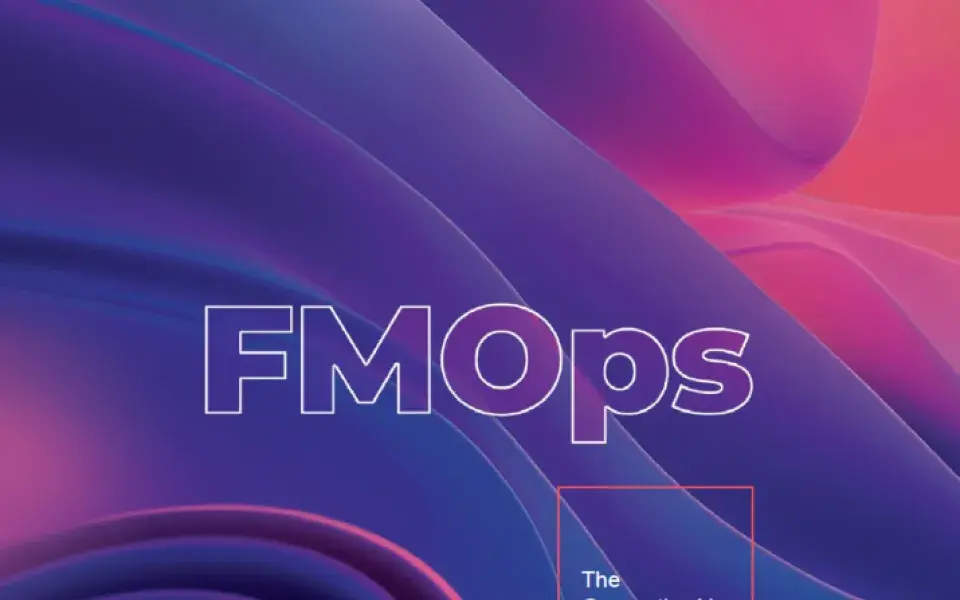Imagine a world where clinicians could predict chronic health risks and take proactive measures before an actual condition manifested. Heart attacks become preventable, and doctors can reverse diabetes. Health organizations could predict outbreaks and devise strategies to mitigate their impact. Mortality rates would plummet while the health index soars to new heights. This vision has long been a cherished dream of healthcare pioneers.
With predictive analytics, we are stepping into an era where this vision is transforming into tangible reality. Predictive analytics in healthcare refers to using big data and machine learning algorithms to analyze vast medical data to identify trends and patterns to predict future outcomes.

Predictive analytics is not a new technology. The history of predictive analytics traces back to 1689. However, big data and machine learning have resulted in higher accuracy in these predictive models.
Healthcare data analytics analyzes historical and real-time patient data from various sources. It collects data from EHRs, medical devices, and research studies. This data, when fed into predictive models, helps predict:
- Disease onset and progression
- Patient admissions and readmissions
- Treatment responses and alternatives
- Outbreaks and epidemics
- Medication adherence
- Resource demand
- Healthcare costs
Such insights enable healthcare organizations to tackle uncertainties in a better way.
To grasp a deeper insight, let’s explore the importance and benefits of using predictive analytics in healthcare.
Importance And Benefits Of Predictive Analytics In Healthcare
Our brain constantly makes predictions based on past patterns. For example, if eating bread has caused indigestion the last three times, we are more likely to avoid it. Such predictions have equipped us to better adapt to challenges and adversities.
However, as data complexity increases, making accurate predictions becomes more intricate and demanding. For example, doctors need to predict the prognosis for a patient based on his medical history and past outcomes. This requires studying their entire medical history, familial medical records, and similar cases. It is not only time-consuming but also highly prone to mistakes.
Predictive analysis can analyze vast amounts of data and make predictions within seconds with much higher accuracy. The tool reads the data, identifies health risks, and detects potential diseases before they manifest. This enables early intervention and preventive measures, which improve treatment outcomes.
Predictive modeling in healthcare also helps in emergency care and surgery. It provides necessary insights that help make quick and acute decisions.

Let’s have a detailed look at the benefits of using predictive analytics in healthcare:
1. Improved Patient Outcomes
Predictive analytics play a crucial role in optimizing patient outcomes. It analyzes historical patient data and identifies disease patterns. This helps healthcare professionals anticipate risks, tailor treatments, and intervene earlier. The tool enables timely interventions, personalized care, and informed decision-making. It translates into improved patient health and well-being.
2. More Consistent Care Among Patients
Predictive analytics can help deliver consistent patient care. Wearable devices and remote patient monitoring tools help track a patient's vitals. The predictive tool can trace a disease's trajectory and highlight risk scores. It can send timely alerts, allowing caregivers to intervene on time.
3. Operations Efficiency And Cost Savings
Predictive analysis can predict patient admissions, no-shows, and demand for medical services. These insights can help optimize resource allocation and staff scheduling. It also helps avoid unnecessary procedures and tests that make precise diagnostic predictions. This results in better health outcomes and reduced healthcare costs.
14 Use Cases For Predictive Analytics In Healthcare
Predictive analytics is driving a positive shift across the healthcare landscape. This technology is transitioning us from an era of curative care to preventive care. It can optimize patient care at every stage. From facilitating personalized care and early interventions to risk prevention and reduced readmissions.

Here are some of the most prominent use cases of predictive analytics in healthcare:
1. Early Detection of Diseases
Predictive analysis can detect individuals at higher risk of developing chronic conditions. Predictive data models can generate risk scores based on a patient's medical records, genetic predispositions, biometric data, and social determinants. These scores help identify high-risk patients, resulting in an early diagnosis and improved care.
Recently, the Harvard School of Public Health developed a lifestyle-based prediction model. This model aids in the prevention of cardiovascular diseases. In the same vein, researchers from Johns Hopkins University developed a machine-learning algorithm. It uses predictive analytics to identify individuals exhibiting suicidal behavior.
Predictive analysis is also making huge progress in the early detection of Alzheimer’s. It analyzes a patient’s speech patterns, like linguistic clarity and speed. Continuous monitoring of such insights helps identify Alzheimer's indicators.
There are many healthcare data analytics models for cancer prediction and diabetes detection. By identifying individuals at higher risk, healthcare providers can take proactive measures. They can design targeted interventions, personalized monitoring, and preventive strategies.
2. Disease Progression and Comorbidities
Monitoring a disease's progression is crucial for chronic or comorbidities patients. These models use historical patient data, genetic factors, and lifestyle choices to predict disease progression.
With predictive analysis, healthcare providers can gauge which diabetic patient is at a high risk of developing retinopathy and which patient may develop diabetic nephropathy. Such early insights empower physicians to initiate prompt treatment and prevent the risks of disease progression.
Predictive analysis for monitoring disease progression is also making great strides in the fight against cancer. The tool can analyze a patient’s medical records, genetic history, and lifestyle factors to anticipate disease progression, comorbidities, and the outcome of a particular treatment. Such insights can help them devise a personalized treatment trajectory that minimizes risk, improves prognosis, and enhances the patient’s quality of life.
Predictive analytics in disease progression is proving transformative, but its application is currently limited to specific conditions.
3. Hospital Overstays and Readmissions
Healthcare organizations use predictive modeling to identify patients likely to exceed the average period of hospitalization for their condition. Such overstays drive up costs and block hospital resources, leading to high waiting times and bed shortages. With predictive insights, clinicians can personalize the treatment plan and keep patient recovery on track.
Many organizations are also using predictive modeling to identify patients with a high probability of readmission. OSF HealthCare uses an AI-based discharge platform with a predictive model to identify patients at risk of extended hospital stays and make necessary arrangements.
Predictive analytics can transform a reactive healthcare approach into a proactive one. The tool combines data from multiple sources to identify people susceptible to urgent or special medical needs, enabling healthcare providers to intervene before complications arise.
Thus, with predictive analytics, clinicians can help patients avoid overstays and readmissions that strain hospital resources and escalate expenses.
4. Healthcare Resource Management
Healthcare organizations embrace predictive health analytics to forecast patient needs. By analyzing factors like seasonal patterns and demographic shifts, predictive analytics can forecast the demand for hospital resources and make arrangements accordingly. It also helps predict appointment no-shows and efficiently plan a clinician’s schedule.
Predictive analysis can also track public health to identify patients at risk of hospitalization. Such insights can help them take proactive measures and be better prepared to handle emergency cases. This can significantly curb crucial time loss and result in prompt interventions, decreased complications, and lower mortality rates.
Kaiser Permanente has implemented a predictive analytics system to identify high-risk patients. The tool also provides recommendations for interventions to prevent complications.
Predictive analytics has also proven its worth in navigating severe outbreaks. It enabled healthcare organizations to bolster their workforce and acquire new resources to accommodate higher patient volumes without compromising service quality.
5. Supply Chain Management
Many healthcare organizations and pharmaceutical companies are already leveraging the benefits of predictive analysis in supply chain management. By anticipating future demands, challenges, trends, and patterns, predictive analysis can significantly improve supply chain management.
Pfizer, a biopharmaceutical company, employed predictive analytics to deliver uninterrupted access to medicines and vaccines, even during the pandemic. Especially during the COVID-19 pandemic, Pfizer leveraged predictive analysis to streamline the global supply of Pfizer vaccines, ensuring their timely delivery.
The company used predictive analytics to monitor shipments and track the condition of sensitive inventory in real-time.
This proactive approach allows them to make necessary adjustments and navigate supply chain challenges while ensuring the continuous flow of essential resources. Predictive analytics in healthcare supply chains can prevent disruptions and enhance overall resilience.
6. Patient Engagement and Behavior
Healthcare organizations use predictive modeling to improve patient engagement and promote patient behavior. This approach has been pivotal in customizing patient journeys and optimizing patient outcomes.
For example, predictive analytics can help identify patients who are more likely to neglect medications or disregard lifestyle changes. This data aids in mapping out a personalized disease progression trajectory for each patient. Consequently, it helps healthcare professionals design customized treatment plans that are more likely to be successful.
Another notable application of predictive analytics is predicting appointment no-shows. The tool can identify patients who might miss appointments without prior notice. This insight can help plan a doctor’s schedule, enhance access to care, and curb revenue loss. They can also send appointment reminders and offer transportation assistance or other support to reduce no-shows.
Predictive analysis can improve patient engagement with targeted marketing efforts and tailored communications. This ultimately fosters patient loyalty and enhances the overall healthcare experience.
7. Predicting Patient Preference
Understanding patient preferences is a cornerstone of providing quality healthcare. Predictive analytics can provide insights into patient choices and treatment inclinations. This approach empowers clinicians to adopt a patient-centric approach, improving treatment outcomes and enhancing patient satisfaction.
For instance, by analyzing a patient's past decisions, predictive analytics can forecast which clinician best matches their needs. It can also recommend appointment schedules that align with the patient's preferences.
Furthermore, by analyzing lifestyle data and medical history, predictive analytics can predict a patient's likelihood of adhering to a specific treatment approach. For example, some patients are more likely to follow an Ayurvedic regime, while others prefer modern medicine.
Also, some patients are more likely to miss their medications or stop their medications after initial recovery. Having this insight can help healthcare providers plan their recovery journey in a better way. This can significantly improve patient outcomes and reduce subsequent hospital visits.
8. Handling Insurance Claims
Predictive analytics in health insurance is witnessing a steep rise. Insurance companies are capitalizing on this technology to precisely anticipate a patient's health risks and calculate insurance premiums. It also equips them to create customized policy plans to meet each patient’s unique requirements.
Advanced analytics in healthcare have also played a crucial role in transforming the claim reimbursement process. Quick insurance reimbursements can help hospitals by improving their cash flow. It can help them meet operational expenses, maintain quality patient care, and streamline administrative processes. This can enhance the overall financial health and stability of the institution.
Using predictive analysis, healthcare organizations can analyze their applications before submission. The tool can predict the success or failure of a reimbursement claim.
The Cleveland Clinic uses an AI-powered natural language processing system that extracts information from unstructured data to support its billing processes. This has automated their billing process, facilitating zero errors and quick reimbursements.
9. Centralized Command Center Capabilities
A centralized command center is paramount in a high-stakes environment where a matter of seconds can make a life-altering difference. Healthcare predictive analytics can help establish a centralized command center to facilitate better communication and collaboration.
The Johns Hopkins Hospital launched a one-of-a-kind centralized command center that enables the hospital to look two days into the future. It can anticipate the specific expected number of patients coming in and going out on a daily basis. The tool resulted in a 60 percent improvement in the hospital’s ability to accept patients with complex medical conditions.

The command center combines the latest in systems engineering, predictive analytics, and situational awareness to manage patient care and safety. Through continuous digital monitoring, hospital personnel can track incoming ambulances, streamline arrivals, monitor operating room statuses, and oversee patient movements. The data enables the team to make quick, informed decisions on bed assignments and assistance.
10. Predictive Blood Tests for Evaluating Treatment Effectiveness
Shifting away from the age-old paradigm of 'trial and error,' predictive blood tests are ushering in a new era of medical treatment evaluation. In the traditional approach, physicians would diagnose a condition and prescribe medication. This could lead to variable outcomes, ranging from positive responses to worsened symptoms or adverse effects. This approach not only consumes valuable time and resources but can also potentially jeopardize patient well-being.
Predictive blood tests have emerged as a reliable framework to gauge the effectiveness of a treatment approach. These tests scrutinize blood marker levels, providing valuable insights into treatment efficiency and its impact on a patient's health.
Thus, with predictive blood tests, clinicians can optimize treatment plans and customize interventions with precision. The ability to accurately foresee treatment outcomes empowers healthcare institutions to fine-tune regimens, closely monitor progress, and make well-informed decisions.
11. Incorporation of Social Determinants of Health in Machine Learning Models
Healthcare organizations increasingly turn to machine learning models to gain deep insights into patient health and tailor personalized treatments. These models encompass various data points, including past medical records, lifestyle preferences, genetic profiling, and more.
However, recent research found that social determinants of health, like socioeconomic status, living conditions, and environmental influences, can also impact a person’s health.
For instance, machine learning models enriched with social determinants of health have been more accurate in predicting heart failure or stroke. The consideration of social determinants of health is also gaining traction in orthopedic care due to their impact on treatment outcomes.
Thus, integrating social determinants of health into machine learning models is pivotal to comprehensively grasping patient well-being and refining care strategies. It can help deliver personalized interventions, elevated patient care, and a more equitable approach to healthcare delivery.
12. Identifying Warning Signs for Early Intervention
Predictive analytics has achieved ground-breaking progress in the early detection of complex diseases, leading to timely interventions and improved patient outcomes. This technology combines lab results with patient information such as age, gender, demography, medical history, and socioeconomic details to generate disease-specific patient risk scores.
Risk profiling can be life-saving, particularly in detecting and treating silent diseases like diabetes, cancer, heart blockage, or liver disease. It can also help trace a patient’s disease progression and identify the risk of comorbidities at an early stage.
Predictive analytics in ICU monitoring can also help with early intervention for patients with deteriorating health parameters. This alerts the healthcare team, enabling them to act before a crisis occurs.
13. AI-powered Systems for Efficient Electronic Health Record (EHR) Data Review
Predictive analytics is revolutionizing the review of electronic health records (EHRs), offering significant benefits for healthcare professionals and patient care. Healthcare professionals tend to devote a substantial amount of time to reviewing EHRs. However, with the increasing amount of data stored in EHRs, physicians often experience information overload.
By seamlessly integrating predictive analytics into EHR processes, healthcare institutions can enhance data discovery and design personalized treatment plans based on recommendations within EHRs.
Geisinger Health System has implemented predictive analytics to analyze data from the EHR to identify trends and patterns at the population level. The system resulted in accurate predictability of healthcare demands, increased clinician productivity, reduced burnout, and an enhanced standard of care.
Predictive modeling of EHRs also serves as an invaluable asset during critical emergencies by offering quick access to a patient's comprehensive medical history. This helps healthcare providers make accurate decisions in time-critical situations, irrespective of their geographical location.
14. Early Detection of Alzheimer's Disease
Alzheimer's is one of the most prevalent neurological disorders that slowly destroys memory and thinking skills and eventually impedes the ability to carry out the simplest tasks. Early detection of Alzheimer’s can be challenging because the subtle symptoms are often confused with age-related issues. The cost and complexity of lab tests and medical imaging compound the difficulty. Early identification and intervention are pivotal in slowing the disease's progression.
Predictive analytics is emerging as an invaluable tool that can help in the early detection of this disease. Alzheimer's patients exhibit distinct speech patterns, including slower speech, increased pauses, and reduced linguistic clarity. By scrutinizing acoustic and linguistic features, the tool can identify Alzheimer's indicators with 70-75% accuracy.
Encompassing facial expressions and integrating behavior sensors into the tool holds promise for further enhancing its accuracy. The transformative potential of predictive analysis is evident, as a simple app can track this data and alert a patient to potential risks.
Real-Life Applications Of Predictive Analytics In Healthcare
According to Statistica reports, 66 percent of healthcare organizations across the United States have adopted predictive analytics to facilitate better care. From personalizing treatments to improving operational efficiency, the applications of predictive analytics in healthcare are myriad.

Here are four striking examples of real-life applications of predictive analytics in healthcare:
-
Tracking and Mitigating the Spread of COVID-19
The effective tracking and prediction of COVID-19 patterns have been pivotal in managing the pandemic's impact. Predictive analytics and data-driven insights have significantly guided decision-making, resource allocation, and supply management.
Various healthcare organizations relied on predictive dashboards to estimate the surge in cases. This helped them ensure the availability of sufficient medical supplies, equipment, and hospital beds.
Parkland Memorial Hospital navigated through the pandemic with the adoption of predictive analytics. During the pandemic, they utilized predictive models to forecast a surge in cases within a 7-day window. They also used geographical mapping to identify positive cases, conversational chatbots to update families, and an inventory tracker to maintain resources. By leveraging predictive analytics, Parkland Memorial Hospital could effectively manage the challenges posed by COVID-19.
-
Enhancing Chronic Disease Management and Prevention
Predictive analysis plays a crucial role in preventing and enhancing the management of chronic diseases like diabetes, cancer, Parkinson's, and Alzheimer’s. Today, intelligent devices can generate a rich stream of real-time data. Predictive models can leverage this data to draw dynamic insights into a patient’s health profile, treatment response, and disease progression.
The model can also alert the caregiver in cases of deteriorating symptoms or high risk to the patient’s health. For example, a machine learning-based heart attack prediction model has successfully prevented heart attacks.
Predictive devices can identify changes in a patient’s health status even before noticeable symptoms occur. This enables care teams to intervene promptly with personalized treatments. A 2016 study used a predictive model to predict Parkinson’s disease in at-risk patients. Researchers found it effective, with an accuracy of over 96% (Reference: neurosciencenews.com).
- Predictive Analytics Preparing for Future Healthcare Trends and Events
Predictive analytics is pivotal for proactively preparing for forthcoming healthcare trends and events. By harnessing data-driven insights, healthcare organizations can anticipate, strategize, and adapt to changes in the healthcare landscape.
Predictive models forecast healthcare trends, such as disease outbreaks, patient demand fluctuations, and resource allocation needs. By analyzing past disease outbreaks, predictive models identify patterns that indicate an outbreak's start, progression, and potential severity. These patterns serve as the basis for making accurate predictions.
In addition, predictive analytics can help healthcare organizations anticipate upcoming trends and changes in policies and regulations. Such insights can be instrumental for an organization's marketing and administrative arms.
- Predictive Analytics Model for Reducing MRI Appointment No-Shows
MRI appointment no-shows pose a significant challenge for healthcare systems, impacting costs, patient waiting times, and care quality. Missed appointments lead to increased patient risk, delayed diagnoses, worsened health outcomes, and increased acute care utilization.
Researchers found that predictive analytics models can effectively reduce outpatient MRI appointment no-shows. By assimilating a wide range of data, including historical appointment records, patient demographics, clinical profiles, and factors such as weather and traffic, the predictive model establishes correlations and patterns that contribute to no-show occurrences.
The model enables healthcare providers to anticipate potential no-shows with remarkable accuracy upon implementation. Patients were reminded of their appointments through phone calls, text messages, and e-mails. Some clinics also designed interventions like transportation support and incentives to encourage patient visits on schedule.
The Future Of Predictive Analytics In Healthcare
Predictive analytics have already impacted the healthcare industry. During the pandemic, it offered insightful details about the spread patterns, its severity, and the potential areas of high impact. These revelations facilitated proactive interventions and well-informed decisions, effectively curbing their repercussions.
Since then, the spectrum of predictive analytics applications has expanded exponentially within healthcare. From forecasting individual health risks to projecting the outcomes of specific treatment paths, this technology has propelled the healthcare industry's efficiency to unprecedented heights.
Here are some of the trends that will shape the future of predictive analytics in healthcare:
-
Advancements in Predictive Modeling Techniques
The healthcare industry is increasingly adopting AI and machine learning techniques to enhance predictive modeling. These technologies can handle large and complex datasets, identify intricate patterns, and make accurate predictions. Deep learning algorithms, convolutional neural networks, and recurrent neural networks are employed to process diverse healthcare data, such as medical images, genetic sequences, and electronic health records.
-
Overcoming Limitations and Expanding Predictive Capabilities
The accuracy of predictive models relies on high-quality, comprehensive data in the healthcare industry. Enhancing data collection, standardization, and interoperability across healthcare systems is essential to ensure reliable inputs for predictive models, thereby strengthening their effectiveness.
The healthcare landscape is complex, and an algorithm may only sometimes produce the most effective results. Privacy issues and algorithm biases are other limitations that need to be tackled.
-
Harnessing the Power of Big Data and Computer Processing
The convergence of big data and predictive analytics will facilitate heightened predictive precision. There is an upward trend in wearable sensors and modern health apps. These sensors will facilitate continuous monitoring of patient’s health metrics. Predictive models adeptly analyze real-time data to spot deviations from standard patterns, enabling timely interventions and proactive healthcare management.
Despite the promising progress, only 15 percent of hospitals use advanced predictive analytics. However, there is a strong interest among organizations across the industry in eventually adopting and leveraging predictive analytics tools to solve clinical and operational problems.
Conclusion
Integrating predictive analytics into healthcare is revolutionizing how we approach patient care, transitioning from reactive to proactive care.
Predictive analytics equips caregivers to foresee potential health issues and identify serious health risks. Such a tool can facilitate timely interventions, thus preventing diseases from escalating. This shift significantly improves patient outcomes and reduces the strain on healthcare systems.
Predictive analytics is also propelling personalized medicine to new horizons. Predictive models enable doctors to tailor treatments based on genetic and medical histories. This helps them provide more efficient and patient-centric care while reducing the excess cost burden resulting from unnecessary tests and procedures.
Thus, it wouldn't be an overstatement to say that predictive analytics is poised to shape the future of the healthcare industry. By harnessing the power of data-driven insights, predictive analytics can revolutionize healthcare, improving patient care, operational efficiency, and global health outcomes.
While these advancements promise to safeguard global health through disease prediction and intervention assessment, they also necessitate careful navigation of ethical concerns surrounding data privacy and security. Healthcare professionals must equip themselves with the skills to harness and interpret the power of predictive insights to benefit patients and the healthcare system at large.



